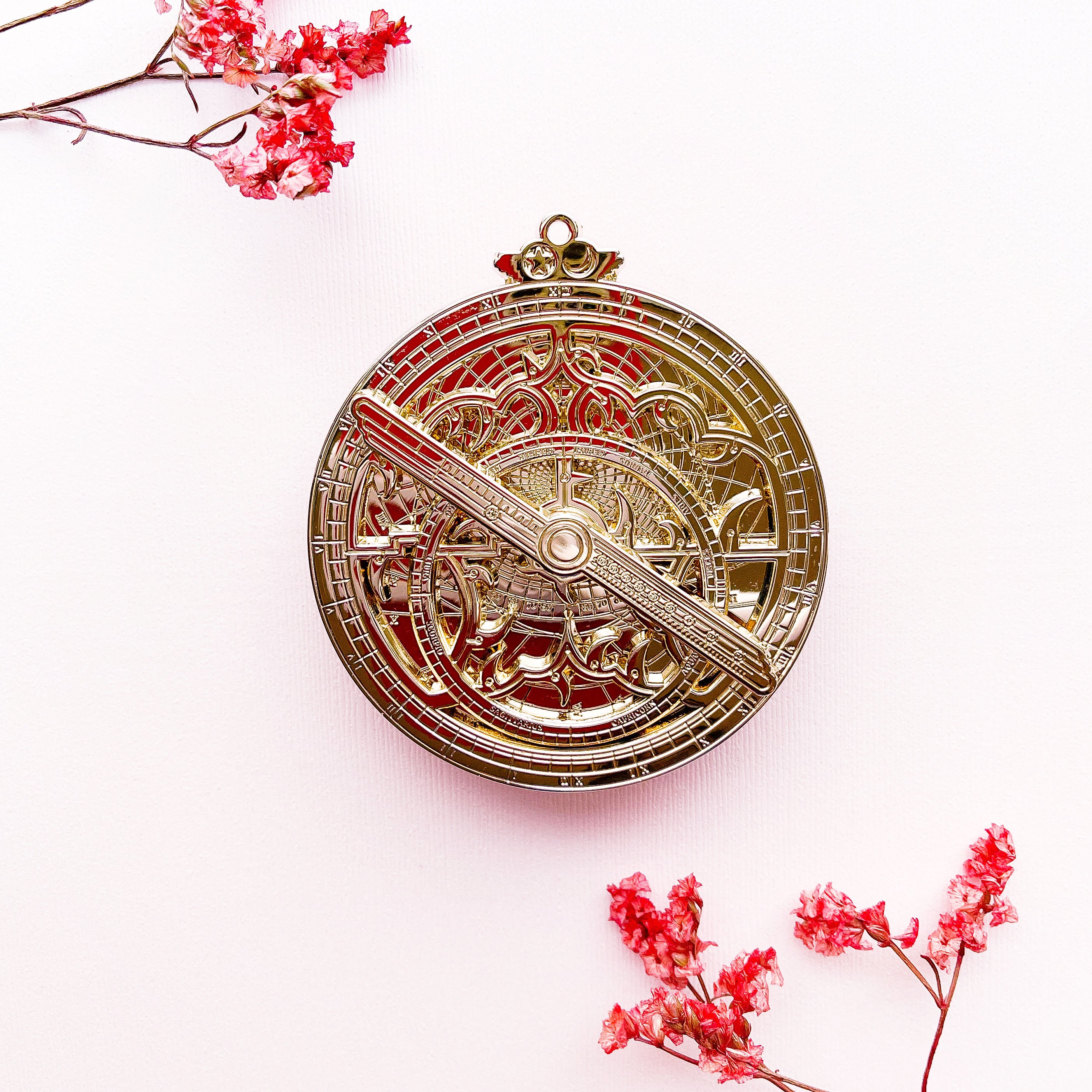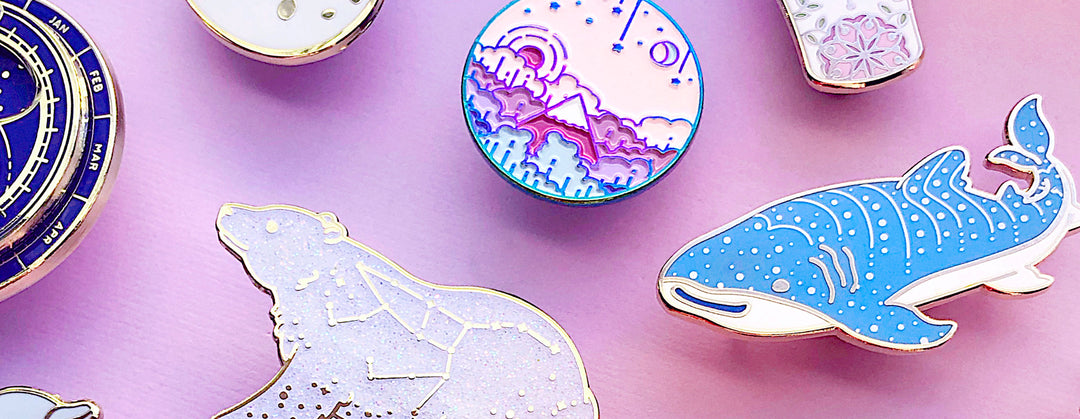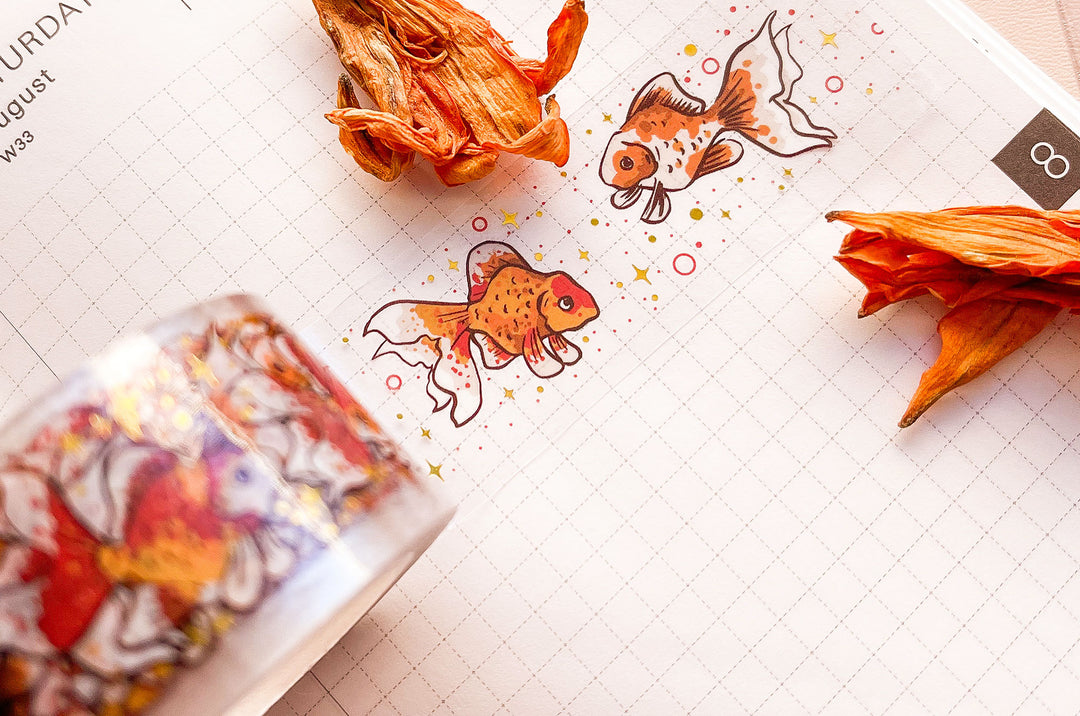Combating Counterfeit Pins
When I began designing enamel pins, I never imagined that anyone would want to steal or produce counterfeits of my pins. Three years later, and I frequent a long list of marketplaces to do "copyright sweeps" at least once a week. And it is at least once a week that I find a new counterfeit of one of my pins or a counterfeit of a pin from a fellow artist.
Counterfeit enamel pins are a big industry and a huge problem for the original artists and designers. Many of us are small business owners who are directly harmed from the production, sale and spread of counterfeits of our work. This post has some tips and information that I've gleaned from my experiences combating fakes of my own pins. Feel free to share this post or reference it if you're a pin artist or collector interested in combating counterfeits.
What is a counterfeit pin?
I feel like there needs to be a distinction drawn between a counterfeit pin and a pin that rips off a design or copies the style of another pin. This post doesn't go into the gray area of rip-off designs or copycats. Its sole target are counterfeit pins which are often traced from an existing pin or sometimes uses the same mold as an existing pin and is sold "off-brand" without involvement, permission or notice to the original artist.
Which pins are counterfeited?
Someone once told me that if a product exists, there are at least ten times as many rip-offs, counterfeits or copycats. Enamel pins are no exception to this, whether you are a popular artist, an established pin designer, a beginner making their very first pin, or a hobbyist who has created one or two pins just for fun. I have seen countless counterfeits from popular designers and new designers alike. I've also seen counterfeits of pins produced for clubs, societies and specific companies be ripped off as well. I've even seen pins that were extremely complex, large or featured tons of special embellishments be counterfeited. The general rule of thumb seems to be that if you have made a pin design, it will probably be counterfeited at some point in time.
How are pins counterfeited?
Usually the counterfeiters will trace a photograph of your pin that was posted online, either in your shop or on social media. These traces often miss fine details, look a little bit off, have wobbly lines, are missing lines, are the wrong plating or enamel process, missing posts on the back, missing features such as glitter or glow-in-the-dark, and the colors are almost always incorrect. These counterfeits are also often made using cheaper methods and inferior materials. This is done so the counterfeiters can sell more of these fake pins by charging less for them because they were produced for so much less cost than the authentic pin.
How do I prevent my pin from being counterfeited?
Unfortunately, the very act of posting a picture of your pin online puts it at risk of being counterfeited. No watermarking or placement of your logo over your artwork will prevent counterfeiting because the thieves will simply omit your logo or watermark when they trace the photo. The only way to avoid counterfeits is to share your pin with as few people as possible, keeping your artwork to a small and select group. This is counterintuitive to how many artists choose to share their works of art, so it is often (sadly) accepted that if it is posted online, it may be ripped off at some point.
Who is hurt by counterfeits?
The original artist is hurt most by counterfeits, the vast majority of whom are small businesses with some depending upon their art as a sole source of income. The impact of counterfeits on an artist's livelihood is complex and all of it is unfortunate. Behind every counterfeit pin sold and bought, an artist loses a little bit more of their brand identity and control over their creations. If a counterfeit item is bought and sold enough, the ownership of the original artwork becomes diluted, potential customers often have no idea who the original creator of a particular piece was. If an item is counterfeited enough, some people might mistake that artwork to be "freely available clipart" and in turn, use it without permission on other things.
Copyright is automatically granted, so artists can fight back, can't they?
Copyright takedowns are possible and in the majority of cases, artists have been successful in removing unauthorized counterfeits of their work. Most marketplaces are willing to work with artists on this problem. However, each takedown has to be done manually with some copyright takedown forms taking much longer than others. Adding to the problem, vigilance in keeping up with counterfeits often takes away an artist's time from doing important things such as creating new artwork. I spend several hours each week sweeping through marketplaces looking for counterfeits of my art. Sadly, I find at least one new offender each week which takes me away from making art, producing new products, packing and processing orders, interacting with customers and everything else I vastly prefer doing over hunting down unscrupulous peddlers of pirated art.
How can I tell if a pin is counterfeit?
Oftentimes, counterfeits are of a lower quality than the original pins. The following is a list of ways you can tell if a pin is a counterfeit...
- Low quality enamel work. Real artists' pins feature better quality enamel and metal work. Authentic pins are produced by better manufacturers, cost more to produce, and are held to a higher standard by the artists themselves. Counterfeits are produced at the lowest possible cost, are often made by manufacturers that push out pins with tons of defects which were made as fast and as cheap as possible.
- Poor quality metal. The metals on fake pins are often tarnished, lumpy, very light and extremely thin. Real pins are thicker, usually have a nice weight to them if they are larger pins and are plated evenly.
- Missing backstamp on pins that should normally have them. Not all artists backstamp their pins so a missing backstamp is not always a tell that a pin is fake. Alum and Ink pins are always backstamped so if you end up with one of my pins and it doesn't have one of my backstamps on the back, it is probably a fake.
- The artwork is odd or incorrect. Most counterfeit pins have been produced from artwork traced off of a photograph of the real pin or based on a mock-up that the artist posted. This often results in missed details, incorrect colors or the artwork looking fuzzy.
- The colors are "off" or otherwise incorrect. Fake pins, because they are usually traced and based off of photos of the real pins, often have incorrect colors on the pins. Pins are produced using Pantone colors which look dramatically different from the colors you see on the screen. Because it is impossible to tell the exact Pantone color based off of a photo, the fake pins usually have incorrect colors as a result.
What can I do if I find someone has counterfeited an artist's pin?
It's highly recommended to reach out to the original artist and report the counterfeit to them. Most artists really appreciate others looking out for them. While you can report the counterfeit yourself, most marketplaces place less weight on a customer's report compared to the original artist/copyright holder's report. So, the best course of action is to notify the artist so they can issue a takedown themselves, should they wish to pursue it.
I'm an artist and one of my pins was counterfeited. What should I do?
Depending upon where the counterfeit of your pin was found, you will need to find a way to issue a takedown notice. All marketplaces have different requirements and forms for artists to fill out. Some are short and easy, others are more involved. The following is a list of marketplaces that counterfeits may be found on, and their corresponding copyright takedown pages...
- AliExpress (via. Alibaba's IPP)
- DHGate (you will need a DHGate Brand account first)
- Etsy
- Amazon
- eBay (via. eBay VeRO program)
- Wish
- RedBubble
In the United States, it is the law that any marketplace that receives a legitimate copyright infringement report act upon it within 48 business hours. Some marketplaces are not based in the United States and can take longer to comply, so you may need to be persistent. Some marketplaces that do not have a presence in the United States may even refuse to comply. You will need to be firm but patient when dealing with these types of marketplaces.
Someone who is selling a counterfeit of my pin just filed a counter to my copyright claim. What can I do?
As of this writing (July 2021), the next available recourse is to speak to a lawyer and initiate a federal lawsuit against the offender. However, bringing a lawsuit (especially a federal one) against another party is expensive, time consuming and extremely stressful. There is some relief for USA-based artists who are victims of false counter-claims in the form of the CASE act, which is set to go into effect in late December 2021. You can read more about the CASE Act here.
As with all legal matters, I am not a lawyer, and you should absolutely consult with a copyright lawyer about any questions you might have about false counter-claims, your rights as a copyright holder and how the CASE Act will affect your claims in the future.
Where can I find help taking down counterfeits of my pins?
The Pin Theft website is a good place to start and has detailed information and resources on how to set up an account on various marketplaces in order to start issuing takedowns on counterfeits of your artwork.















Leave a comment